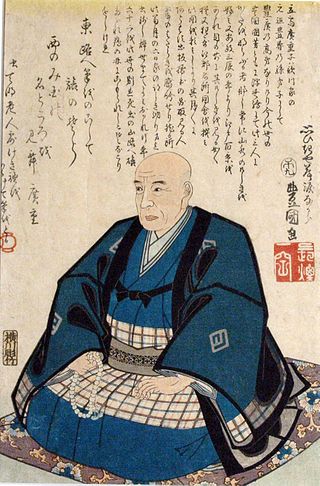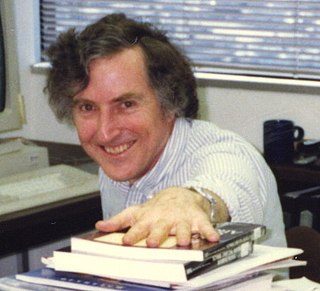In computer network engineering, an Internet Standard is a normative specification of a technology or methodology applicable to the Internet. Internet Standards are created and published by the Internet Engineering Task Force (IETF). They allow interoperation of hardware and software from different sources which allows internets to function. As the Internet became global, Internet Standards became the lingua franca of worldwide communications.

The Internet Engineering Task Force (IETF) is a standards organization for the Internet and is responsible for the technical standards that make up the Internet protocol suite (TCP/IP). It has no formal membership roster or requirements and all its participants are volunteers. Their work is usually funded by employers or other sponsors.
Joyce Kathleen Reynolds was an American computer scientist who played a significant role in developing protocols underlying the Internet. She authored or co-authored many RFCs, most notably those introducing and specifying the Telnet, FTP, and POP protocols.
A Request for Comments (RFC) is a publication in a series from the principal technical development and standards-setting bodies for the Internet, most prominently the Internet Engineering Task Force (IETF). An RFC is authored by individuals or groups of engineers and computer scientists in the form of a memorandum describing methods, behaviors, research, or innovations applicable to the working of the Internet and Internet-connected systems. It is submitted either for peer review or to convey new concepts, information, or, occasionally, engineering humor.
The Internet Architecture Board (IAB) is "a committee of the Internet Engineering Task Force (IETF) and an advisory body of the Internet Society (ISOC). Its responsibilities include architectural oversight of IETF activities, Internet Standards Process oversight and appeal, and the appointment of the Request for Comments (RFC) Editor. The IAB is also responsible for the management of the IETF protocol parameter registries."

Utagawa Kunisada, also known as Utagawa Toyokuni III, was a Japanese ukiyo-e artist. He is considered the most popular, prolific and commercially successful designer of ukiyo-e woodblock prints in 19th-century Japan. In his own time, his reputation far exceeded that of his contemporaries, Hokusai, Hiroshige and Kuniyoshi.

Tsukioka Yoshitoshi was a Japanese printmaker.

Utagawa Toyokuni, also often referred to as Toyokuni I, to distinguish him from the members of his school who took over his gō (art-name) after he died, was a great master of ukiyo-e, known in particular for his kabuki actor prints. He was the second head of the renowned Utagawa school of Japanese woodblock artists, and was the artist who elevated it to the position of great fame and power it occupied for the rest of the nineteenth century.

The Utagawa school (歌川派) was one of the main schools of ukiyo-e, founded by Utagawa Toyoharu. It was the largest ukiyo-e school of its period. The main styles were bijin-ga and uki-e. His pupil, Toyokuni I, took over after Toyoharu's death and led the group to become the most famous and powerful woodblock print school for the remainder of the 19th century.

In computing, the Preboot eXecution Environment, PXE specification describes a standardized client–server environment that boots a software assembly, retrieved from a network, on PXE-enabled clients. On the client side it requires only a PXE-capable network interface controller (NIC), and uses a small set of industry-standard network protocols such as DHCP and TFTP.

Utagawa Hiroshige, born Andō Tokutarō, was a Japanese ukiyo-e artist, considered the last great master of that tradition.

Robert Braden was an American computer scientist who played a role in the development of the Internet. His research interests included end-to-end network protocols, especially in the transport and network layers.
Keith Moore is the author and co-author of several IETF RFCs related to the MIME and SMTP protocols for electronic mail, among others:

John C. Klensin is a political scientist and computer science professional who is active in Internet-related issues.

Hiroshige II was a Japanese designer of ukiyo-e art. He inherited the name Hiroshige II following the death in 1858 of his master Hiroshige, whose daughter he married. In 1865 he moved from Edo to Yokohama after dissolving his marriage and began using the name Kisai Risshō. His work so resembles that of his master that scholars have often confused them.
Next Steps in Signaling (NSIS) was an Internet Engineering Task Force working group focusing on the design of a next generation signaling protocol framework and protocol specifications.
HTTP/2 is a major revision of the HTTP network protocol used by the World Wide Web. It was derived from the earlier experimental SPDY protocol, originally developed by Google. HTTP/2 was developed by the HTTP Working Group of the Internet Engineering Task Force (IETF). HTTP/2 is the first new version of HTTP since HTTP/1.1, which was standardized in RFC 2068 in 1997. The Working Group presented HTTP/2 to the Internet Engineering Steering Group (IESG) for consideration as a Proposed Standard in December 2014, and IESG approved it to publish as Proposed Standard on February 17, 2015. The HTTP/2 specification was published as RFC 7540 on May 14, 2015.

Yūrei-zu (幽霊図) are a genre of Japanese art consisting of painted or woodblock print images of ghosts, demons and other supernatural beings. They are considered to be a subgenre of fūzokuga, "pictures of manners and customs." These types of art works reached the peak of their popularity in Japan in the mid- to late 19th century.

Toasternets were an early-1990s instantiation of the decentralized Internet, featuring open-standards-based federated services, radical decentralization, ad-hoc routing and consisting of many small individual and collective networks rather than a cartel of large commercial Internet Service Provider networks. Today's "community networks" and decentralized social networks are the closest modern inheritors of the ethos of the 1991-1994 era Toasternets.












